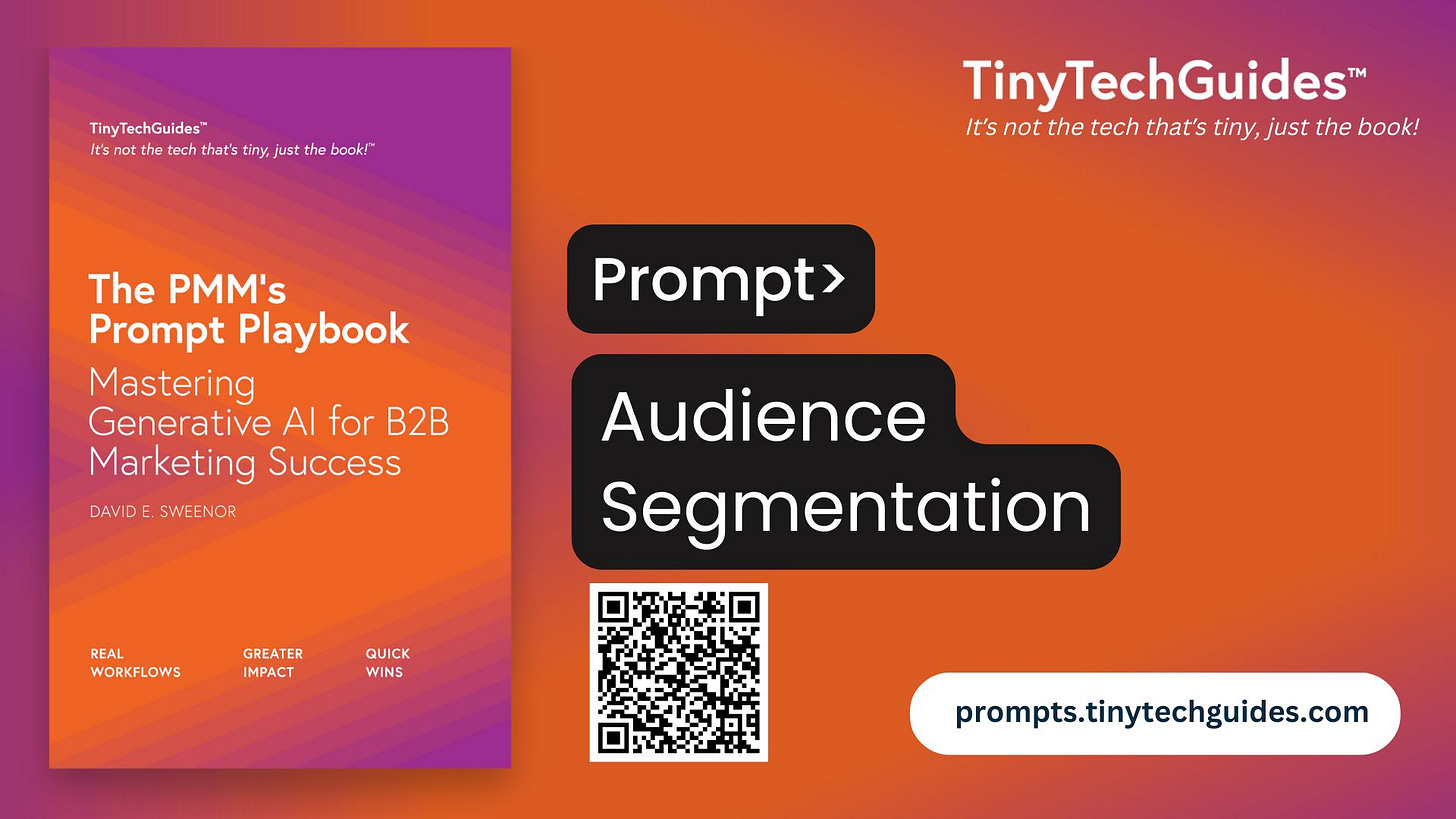Prompt Workflow: Audience Segmentation
Market Understanding
Audience Segmentation Strategies
This prompt, along with 30 others, is included in The PMM’s Prompt Playbook. These cut-and-paste prompts, along with bonus prompts not in the book, will be made available to paid subscribers on a weekly basis.
What does this do?
The Audience Segmentation Strategies workflow provides a structured approach to identifying, categorizing, and prioritizing target customer groups based on industry, solution, and audience characteristics. It ensures precise targeting for marketing, sales, and product development by defining segmentation dimensions, uncovering customer pain points, and aligning messaging with audience needs. By incorporating real-world insights and iterating on feedback, this process helps businesses optimize engagement and improve go-to-market effectiveness.
Workflow steps
Define segmentation objectives
Identify relevant segmentation dimensions (demographic, firmographic, behavioral, needs-based)
Develop an audience segmentation framework
Identify key pain points and needs per segment
Prioritize audience segments based on revenue potential, ease of adoption, and strategic fit
Align segments with tailored messaging and value propositions
Validate audience segmentation with customer insights and sales feedback
Refine and iterate based on findings
Define variables
{industry=Insert your target industry, e.g., enterprise software for financial services.}
{solution=Insert your product/solution, e.g., cloud-based data observability platform.}
{audience=Insert your target audience, e.g., IT managers, compliance officers, or mid-market enterprises.}
Define segmentation objectives
<role/>
You are a market research expert specializing in {industry} and {solution}.
</role>
<context/>
I need to develop audience segmentation strategies for {solution} to optimize targeting, messaging, and product positioning. The target audience includes {audience}.
</context>
<task/>
Define the objectives for this segmentation exercise:
What are the primary goals for segmentation? (e.g., campaign targeting, feature prioritization, go-to-market alignment).
What insights are most critical to achieving these goals?
Provide a suggested approach for developing segmentation strategies.
</task>
<format>
Provide a clear and concise bullet list outlining segmentation goals, critical insights, and a suggested approach.
</format>
<tone>
Professional and focused.
</tone>
Identify relevant segmentation dimensions
<role/>
You are a strategy consultant helping define key segmentation dimensions for {solution} in the {industry}.
</role>
<context/>
I need to segment my audience into actionable groups that reflect their needs, behaviors, and priorities. Possible dimensions include demographics, firmographics, behavioral data, and pain points.
</context>
<task/>
Identify and list relevant segmentation dimensions for {solution}, including:
**Demographic/firmographic**: Company size, industry vertical, location, revenue.
**Behavioral**: Usage frequency, engagement levels, feature adoption patterns.
**Needs-based**: Core pain points, challenges, and goals specific to {audience}.
Provide examples of how these dimensions can be applied to create meaningful audience segments.
</task>
<format>
Organize the response into three categories:
1. Demographic/Firmographic.
2. Behavioral.
3. Needs-Based: Include examples for each category.
</format>
<tone>
Clear and actionable.
</tone>
Build audience segmentation framework
<role/>
You are an expert analyst creating an audience segmentation framework for {solution} in {industry}.
</role>



